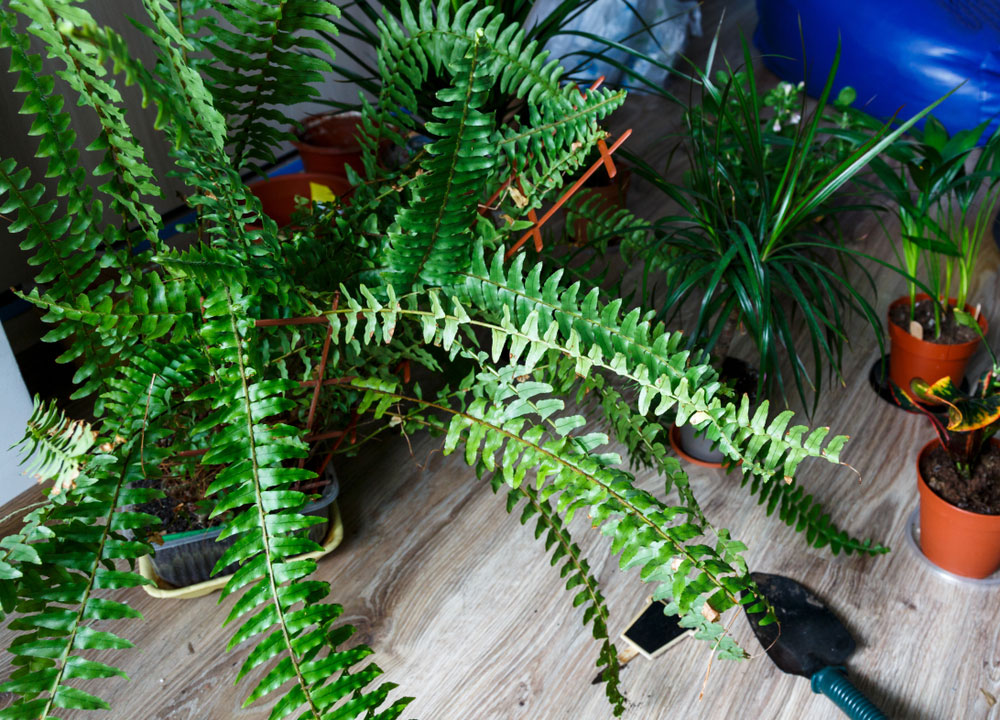
Stem and leaf cuttings are two of the most common ways to propagate plants. However, not all plants can be successfully propagated using these methods.
Ferns, for example, are not propagated via stem or leaf cuttings, and instead use the division or spore method of propagation.
Key Takeaways
- Ferns cannot propagate via cuttings because their leaf fronds will not root.
- The best way to propagate ferns is by dividing the plant in the spring.
- Ferns can also be propagated via runners or by collecting the spores.
Fern Fronds Cannot Grow Roots
Ferns produce fronds, which do have a stalk and leaves. However, unlike other plants, these parts of the fern are not able to grow roots simply because they do not have the required equipment to biologically do so. Because of this, the fern’s fronds cannot be used to propagate the plant via stem or leaf cutting, and other methods of propagating will need to be used.

Propagating Ferns Using The Division Method
To use this propagating method, gently uncover the soil near the crown of the fern to uncover the rhizomes. Choose a rhizome that has roots and at least one emerging frond.
Carefully use your fingers to untangle the roots of the rhizome and then plant the young fern in the same type of potting soil that the parent plant is growing in.
Water the fern and care for it as you normally would.
Propagating ferns using the division method is best done in early spring, such as throughout the month of March.
This doesn’t mean you cannot divide the fern at other times of the year, but doing so in the spring gives the young plants a better chance of survival.
If you do try to divide the plant in a month other than March, you may have to supplement its lighting and heating needs.

Propagating Ferns Using Runners
There are certain species of ferns that produce runners, which can be removed from the parent plant and used to create new ferns.
These runners can either be carefully pulled from the soil or snip off the fern at its base. Because these runners will produce roots when they come in contact with soil, it is not a requirement that the runner has roots when you take the cutting.
Once you have the runner removed, simply plant it in the same soil as the parent fern and care for the runner in the same manner as the mature plant.
Propagating Ferns By Collecting The Spores
Propagating ferns from spores is a little more difficult than the other propagating methods, but it is still possible.
This will require removing the frond from the fern and then setting it between two pieces of white paper.
Let the frond sit undisturbed for 24 hours. After the allotted time, remove the top paper and you should see a powder-like pattern left behind from the front.
This powder is the spores from the fern, and you can simply lift and tilt the paper and then tap to remove the spores from the paper.
The spores can be sown on top of an organic mixture high in nutrient content, such as earthworm compost.
For the best results, add the soil mixture to a container with a lid and then dampen with water. Spread the spores on top of the damp soil and then shut close with the lid.
Set the container underneath a cool fluorescent light so that it receives about 12 to 14 hours of light every day.
It can take 2 or more weeks before a greenish growth will appear on the surface of the soil. This substance will continue to grow into small ferns.
Make sure to mist the soil about once every 2 weeks.






